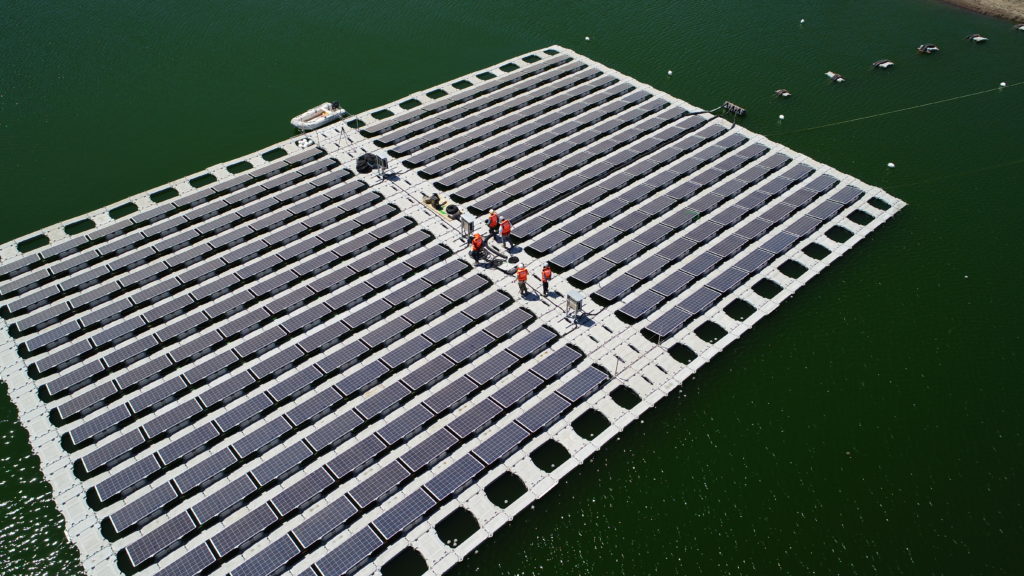The EU’s European Maritime and Fishery Fund (EMFF) will support the Fresher project which aims to improve floating PV technology.
The two-year initiative – which is intended to improve anchoring and mooring technology, particularly for ocean-based facilities – was launched this month by a consortium of Swedish, Spanish and Portuguese entities active in floating PV. Its backers hope technological improvements will lower the cost of electricity generated by floating projects in tandem with raising the generation capacity of such facilities.
The project partners did not reveal how much money the EU would grant the scheme.
An elastic mooring system
The project leader is Seaflex AB, a Swedish provider of pipeline buoyancy products which include its “friendly” anchoring and mooring solutions. These, according to the company, can help increase cost efficiency and decrease maintenance requirements for floating PV projects.
Seaflex’s elastic mooring system is said to be an alternative to ropes and cables which can expand and contract with tides. “In order to handle significant water level variation, the mooring lines must be able to both increase and decrease in length depending on the position of the floats,” the company said.
The technology is said to be compatible with all floating solar panel floats. “Floating solar systems secured with Seaflex have survived hurricane-strength winds and we have documented references dimensioned for 35m water level variations and 90m depths,” stated the company in a document describing the technology.
An important project partner
Portuguese state-owned power utility EDP has also joined the Fresher consortium. “Floating photovoltaic, only in Portugal, has a potential of more than 2 GW,” the mooring group announced in a statement yesterday.
EDP announced a megawatt-sized floating project in June, having built a first, smaller system with Ciel&Terre in November 2016. The earlier Central Solar Fotovoltaica Flutuante do Alto Rabagão project is a 200 kW pilot installation at the Alto Rabagão Dam on the Rabagão River.
The power company’s new strategy includes investment in solar, energy storage and off-grid and hybrid wind-solar projects as well as expanding its traditional renewable assets in wind power.
“Floating PV is one of the new technology frontiers to embrace as it explores the synergies between hydro and solar,” said João Maciel, director for EDP’s center for new energy technologies. “Fresher is likely to play a pivotal role in enhancing [the] maturity and competitiveness of such promising technology.”
This content is protected by copyright and may not be reused. If you want to cooperate with us and would like to reuse some of our content, please contact: editors@pv-magazine.com.




By submitting this form you agree to pv magazine using your data for the purposes of publishing your comment.
Your personal data will only be disclosed or otherwise transmitted to third parties for the purposes of spam filtering or if this is necessary for technical maintenance of the website. Any other transfer to third parties will not take place unless this is justified on the basis of applicable data protection regulations or if pv magazine is legally obliged to do so.
You may revoke this consent at any time with effect for the future, in which case your personal data will be deleted immediately. Otherwise, your data will be deleted if pv magazine has processed your request or the purpose of data storage is fulfilled.
Further information on data privacy can be found in our Data Protection Policy.